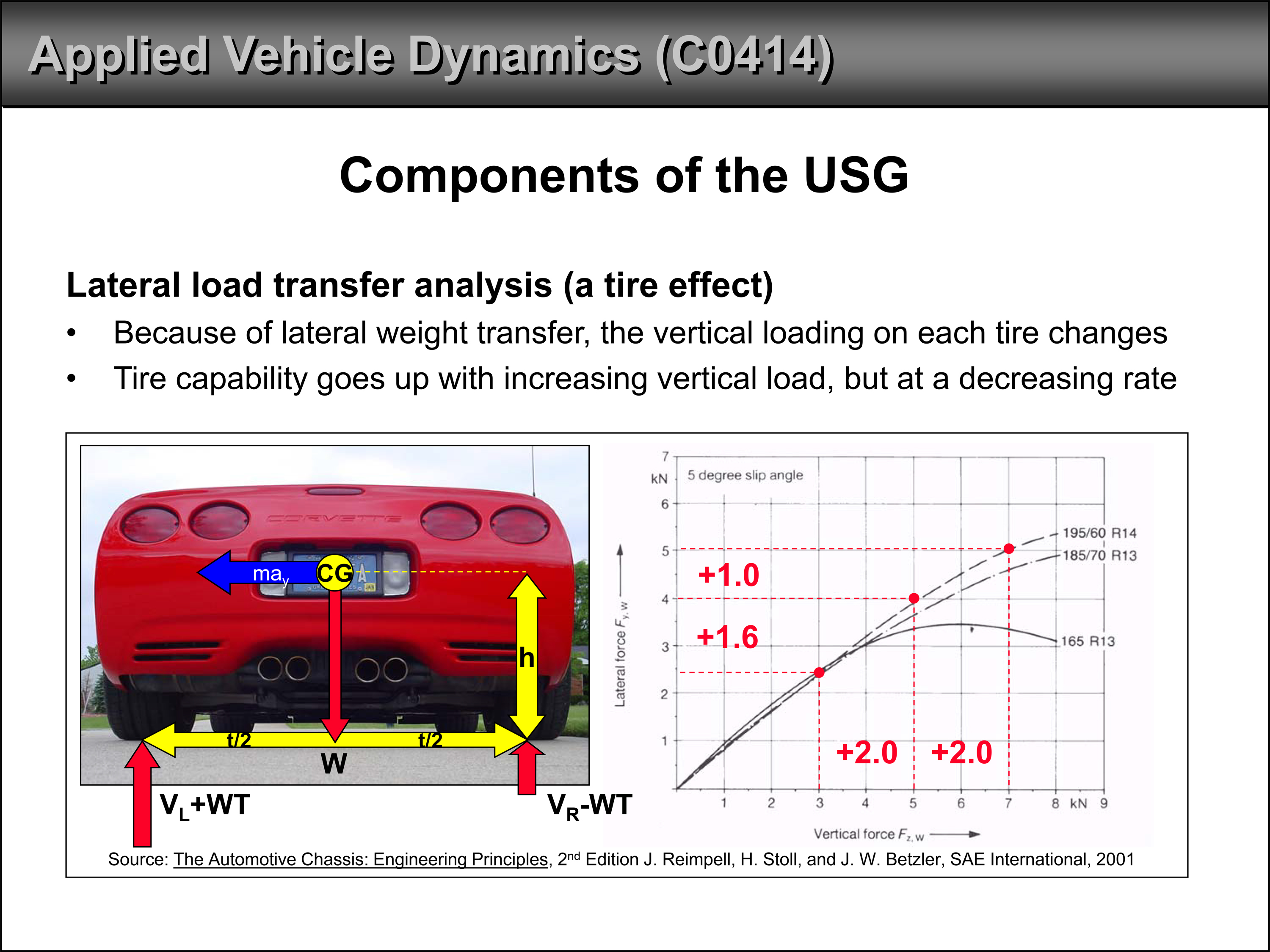
While a variety of new engineering methods are becoming available to assist in creating optimal vehicle designs, subjective evaluation of vehicle behavior is still a vital tool to deliver desired braking, handling, and other dynamic response characteristics. In order to better prepare today’s engineer for this task, this course offers twelve modules devoted to key the fundamental principles associated with longitudinal and lateral vehicle dynamics. Each focused classroom session is paired with an on-track exercise to immediately reinforce these concepts with a dedicated behind-the-wheel driving session, effectively illustrating these principles in the real world.
Note that unlike most driving schools, this course is not designed to train performance drivers. Rather, the exercises on days one and two build the bridge between vehicle dynamics theory and practical application by providing a rich academic underpinning and then reinforcing it with highly focused and relevant driving experiences.
Significant technical skill-building is provided on day three, with increased instructor-supervised track time to further absorb the principles learned on days one and two. If your job description does require performance driving skills, the dynamic exercises on day three will lay a solid foundation on which you can independently refine your own skills.
This course has been approved by the Accreditation Commission for Traffic Accident Reconstruction (ACTAR) for 24 Continuing Education Units (CEUs).
Learning Objectives
By attending this seminar, you will be able to:
- Explain tire-road friction limits and compose the friction circle for a given vehicle system
- Compute fundamental braking response attributes
- Illustrate the physics of turning and calculate lateral weight transfer
- Estimate brake system balance and brake proportioning
- Measure and graph a vehicle’s understeer gradient
- Analyze basic anti-lock brake system (ABS) operation
- Discuss the effectiveness and limitations of electronic stability control (ESC) systems
- Calculate the most efficient path for a vehicle to negotiate a given test maneuver
- Comprehend the effects that test protocol can have on vehicle dynamics
- Predict what response characteristics can be influenced by vehicle state
- Define those vehicle dynamic attributes which can be impacted through vehicle selection
Who Should Attend
This course has been developed for engineers and technical personnel involved in all fields related to the design or development of vehicle dynamics, vehicle braking systems, powertrain systems, chassis systems, or suspension systems. In addition, this course can be valuable to those with component design responsibilities in brake, chassis, suspension, or tire disciplines who desire a fundamental background in vehicle dynamics with a practical driving linkage.
Prerequisites
While not required, potential attendees should have an undergraduate engineering degree or a strong technical background. As a minimum, a basic knowledge of college algebra, college physics, and a familiarity with vehicle brake and suspension systems is recommended.